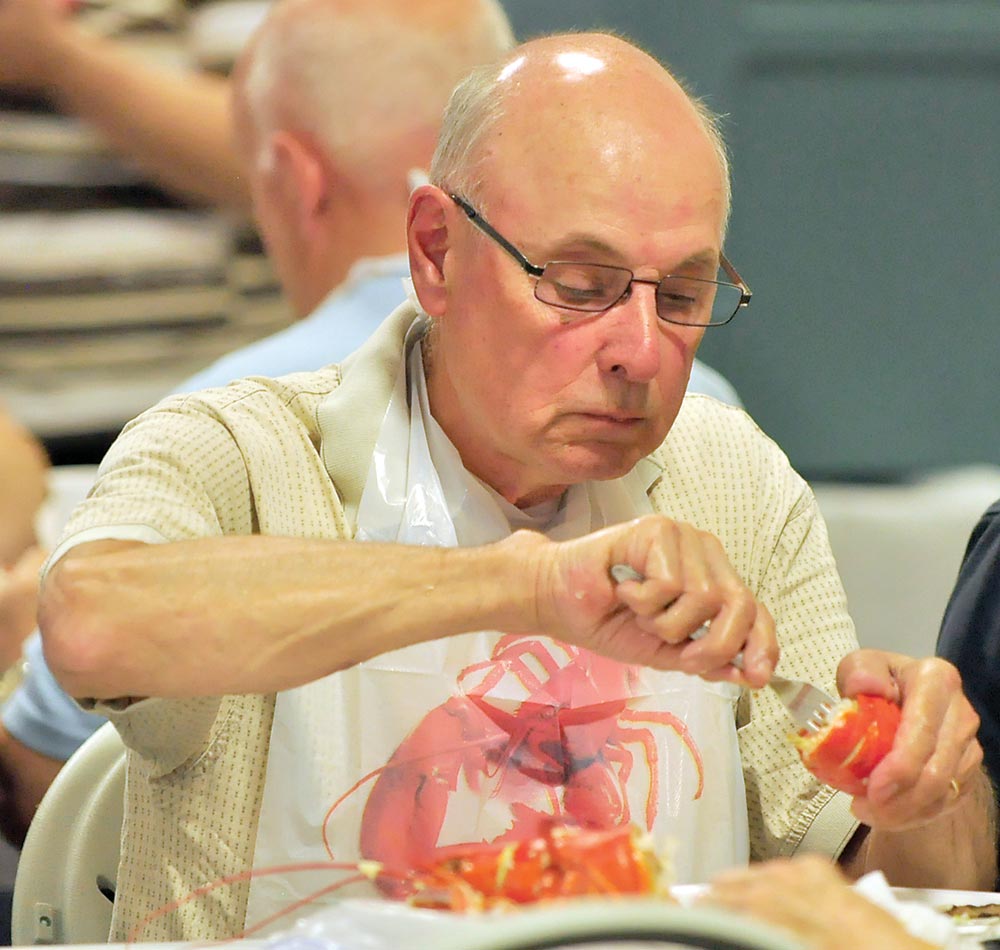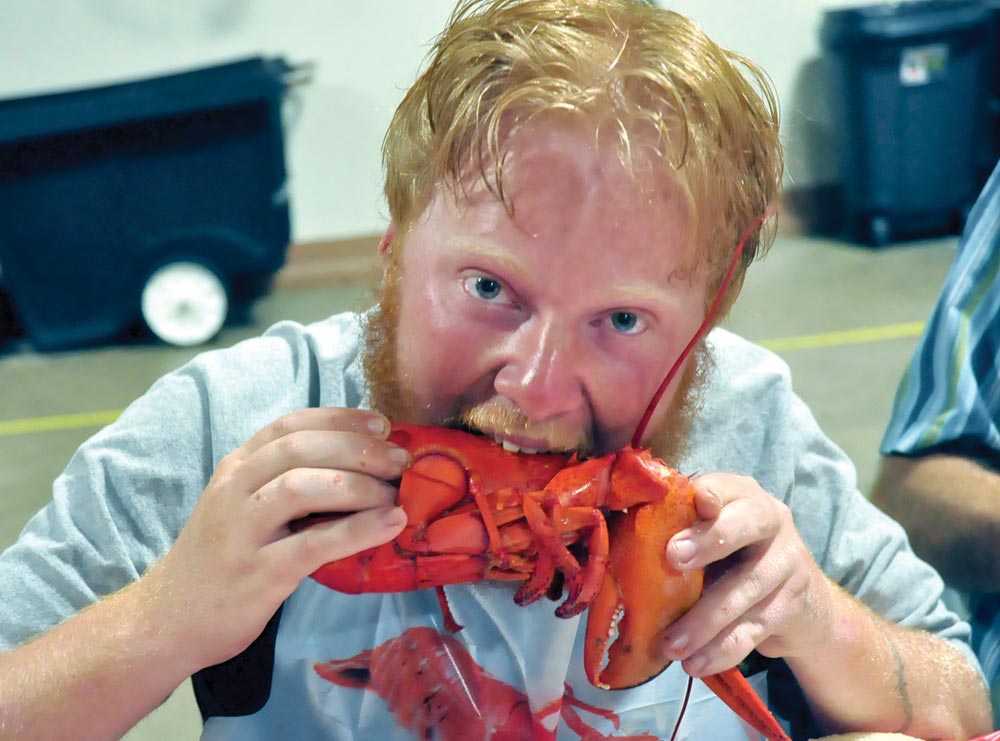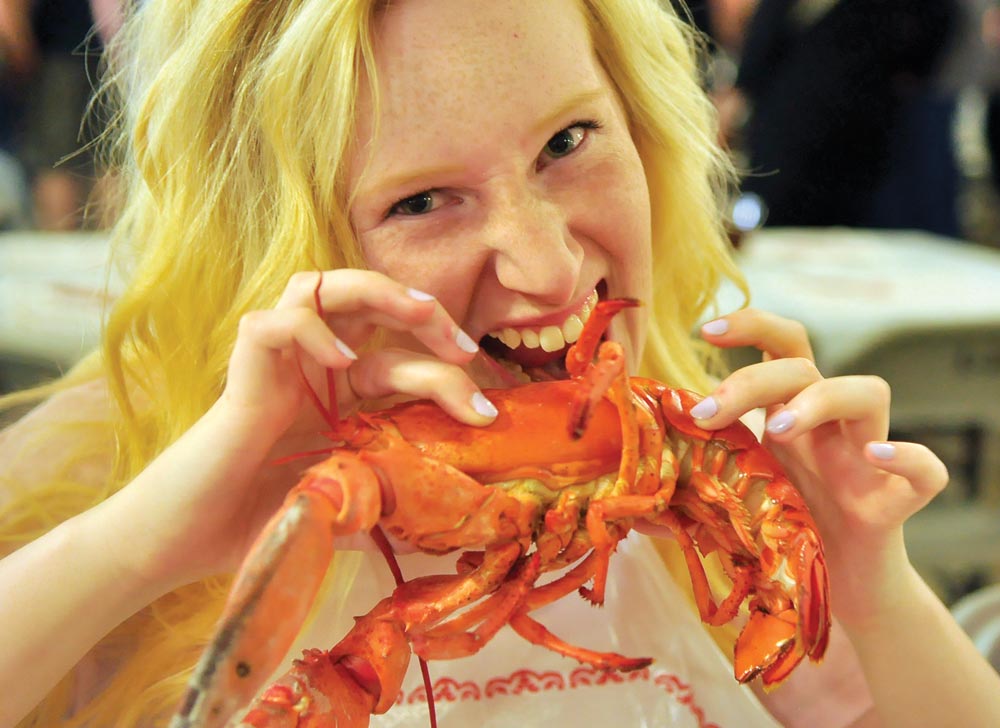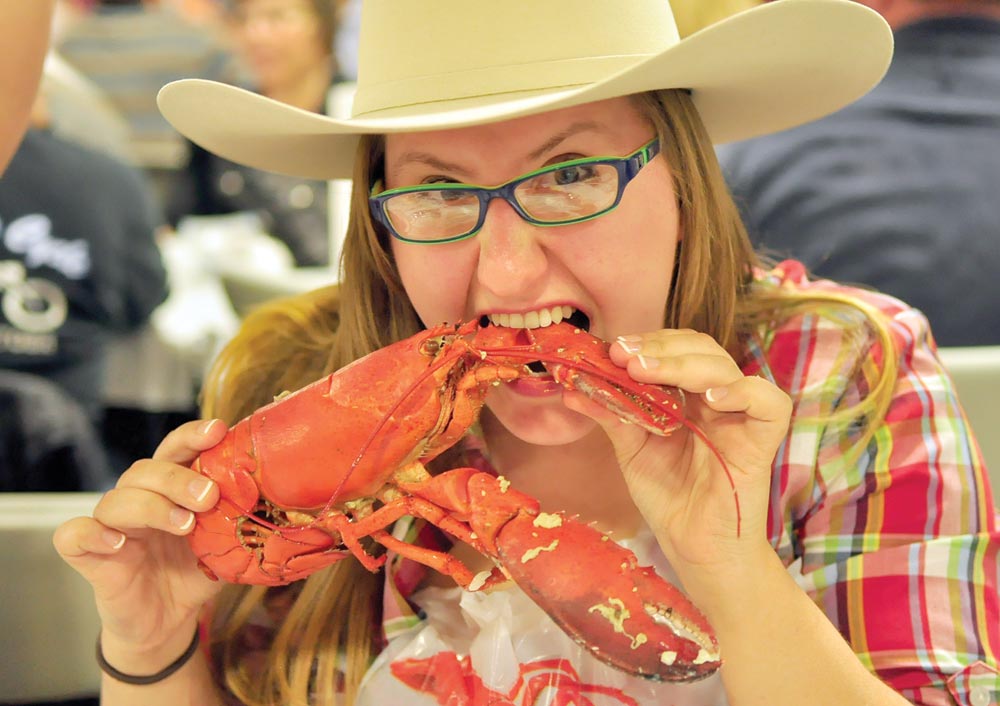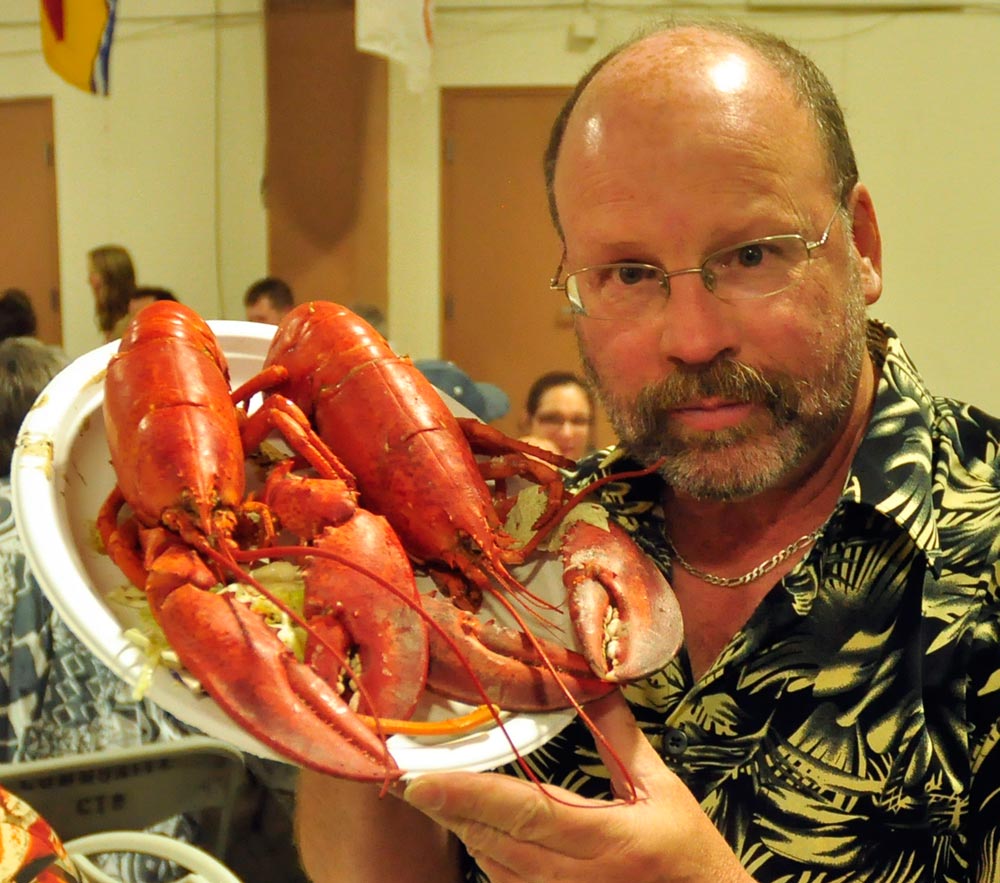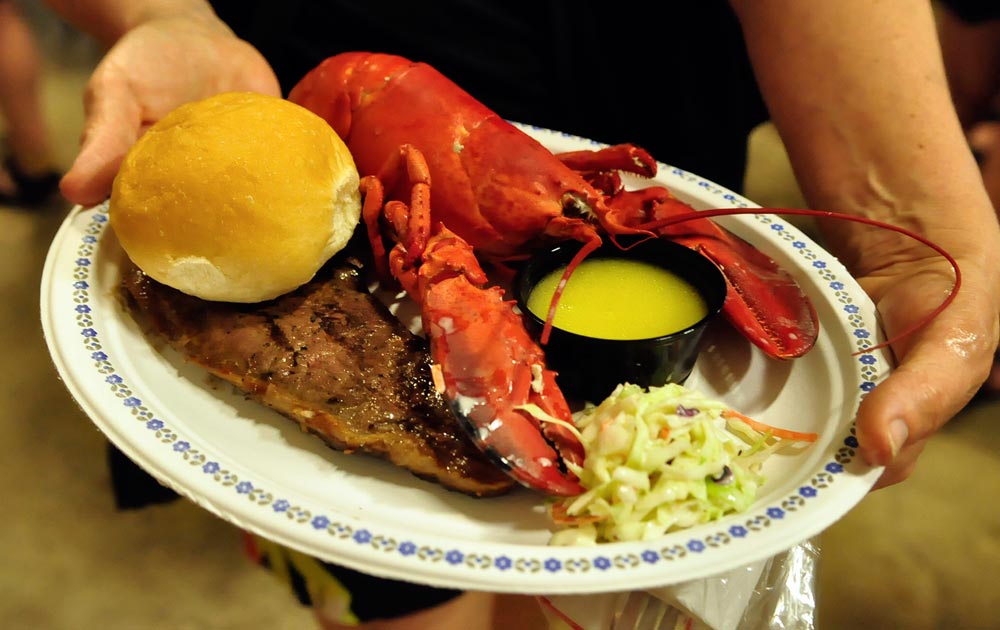
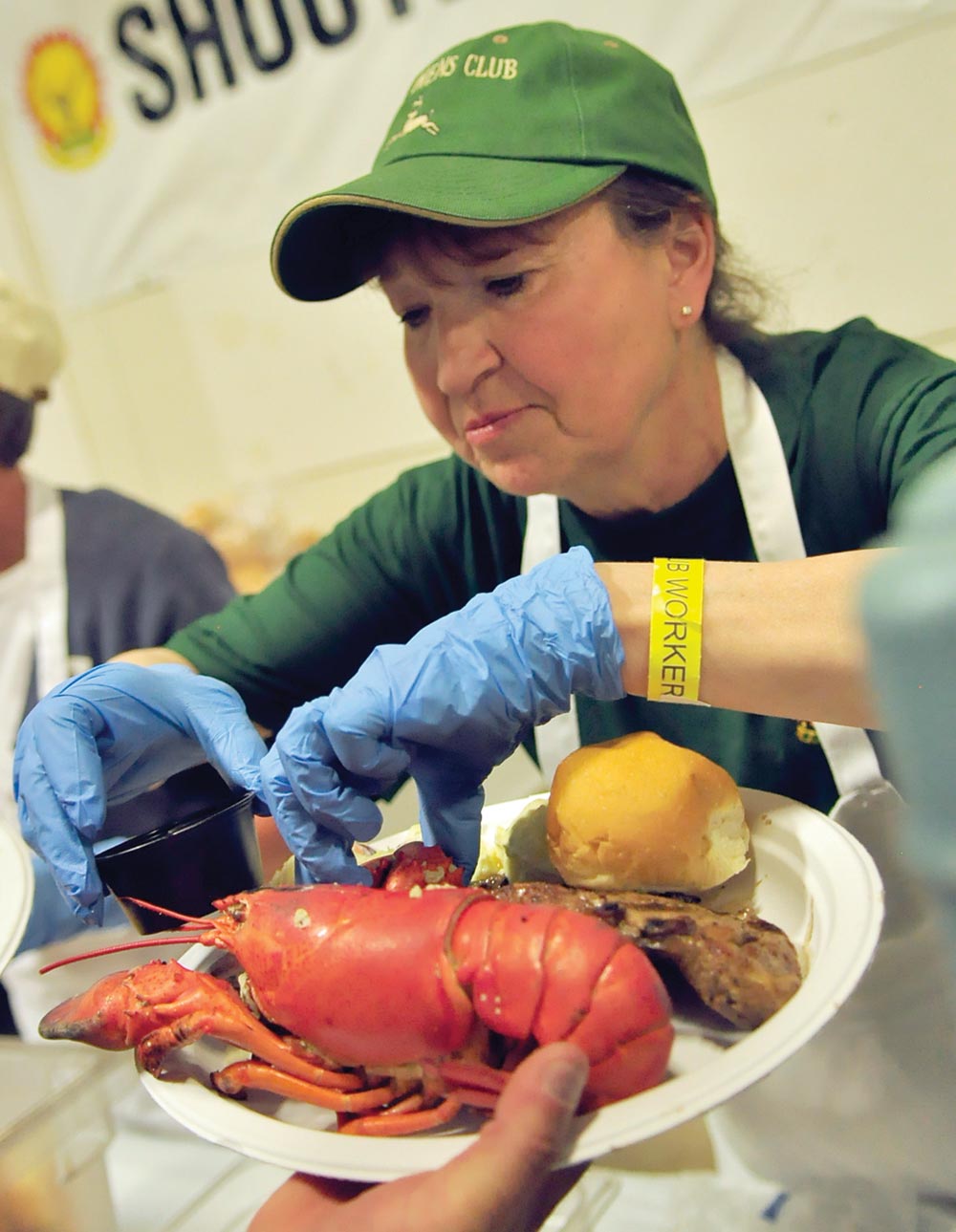
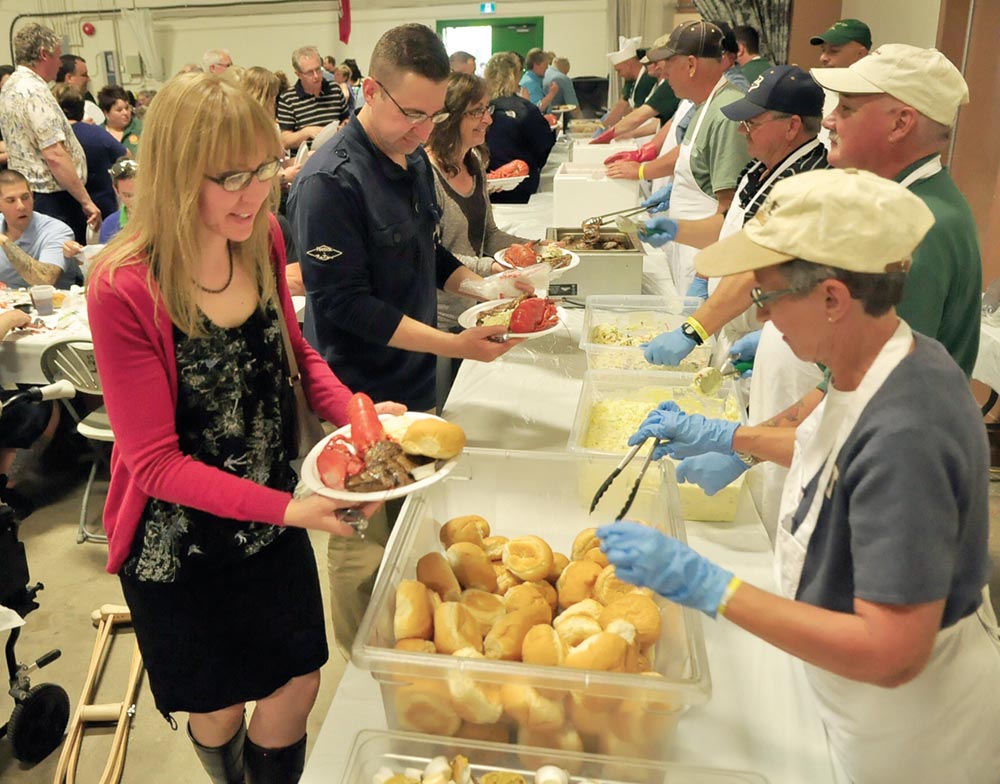
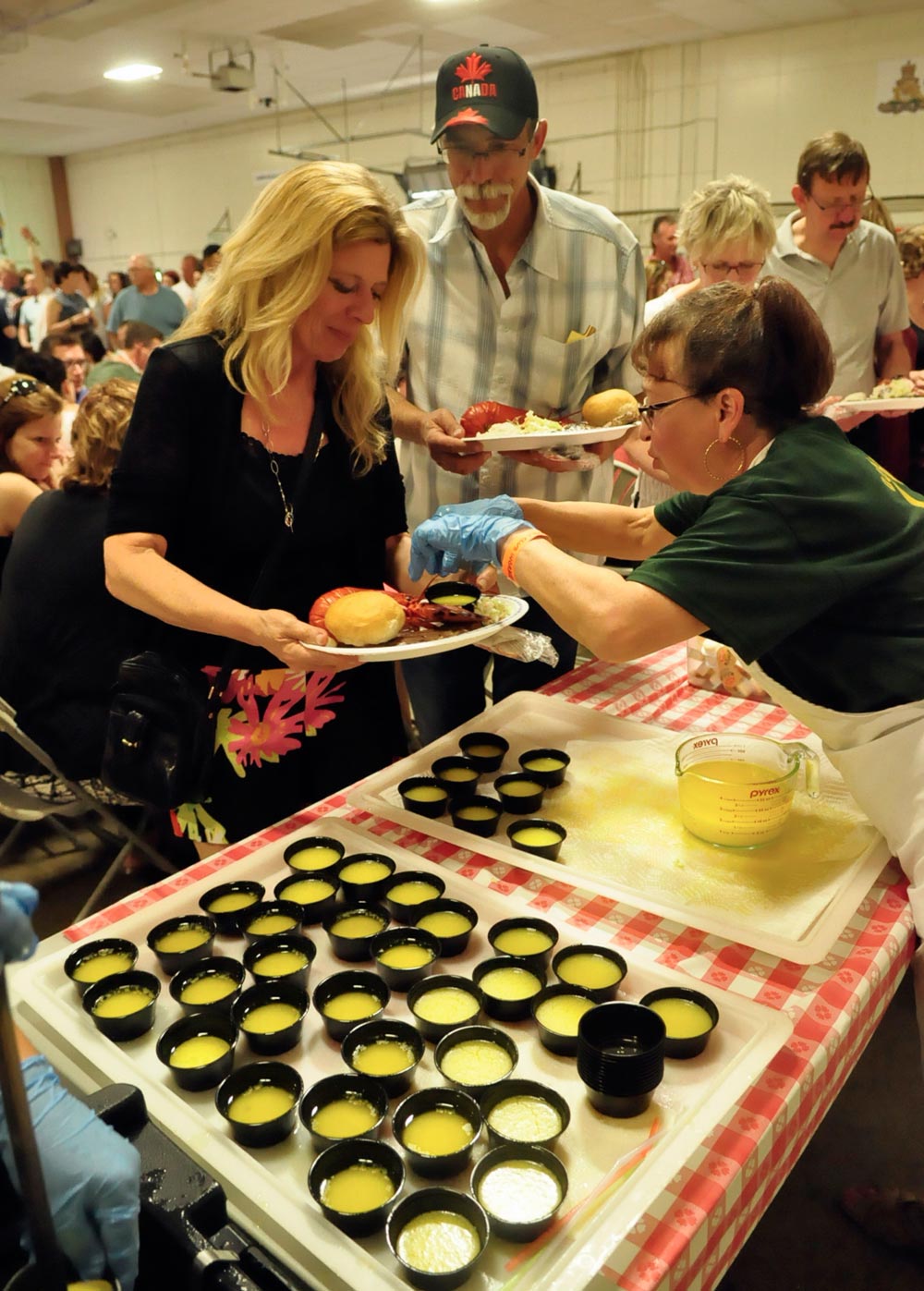
Shilo and Area Service Club members work tirelessly preparing and dishing out plates during the sold-out annual BComd’s Downhomer Lobsterfest held at L25. Who will be the Lobsterfest goer who will take a bite out of their lobster for the calendar photo? Photos Jules Xavier/Shilo Stag
Jules Xavier
Shilo Stag
BRSM CWO Jeremy Abrahamse has marked June 10 on his 2023 calendar.
Why? He’s looking forward to his plate of garlic butter-drenched lobster, steak, coleslaw and bun when BComd LCol Chris Wood hosts his first Downhomer Lobsterfest, which has been postponed the past few summers because of the COVID-19 pandemic.
L25 will be the usual venue for this popular CFB Shilo event, with the Shilo and Region Service Club again doing the food preparation and serving to those who descend on the Base. Ticket information is to be determined, once the logistics of the event are in place. Look to the Shilo Stag to inform you when ticket sales commence. And expect a quick “sold-out” event, so purchase your tickets soonest when they are available on Base, likely CANEX.
Meanwhile, my initial exposure to lobster came as a child when my late father was posted in New Brunswick posted to defunct RCAF Station St. Margarets.
Who knew the five Xavier air force brats, fussy eaters which we were as children, would enjoy our dad’s lobster when he offered it to us. But we did, so that meant his lobster feast was interrupted during our east coast posting.
Many a morning we awoke to find a pile of lobster shells in the kitchen garbage can. Dad would feast after we went to bed.
This will be LCol Wood’s farewell Lobsterfest, as he’s posted out in the summer of ’23 following his two-year stint working out of Base HQ.
Since my first Lobsterfest on Base, I’ve learned more about this east coast delicacy — eating a lobster is not an exercise in etiquette.
Steamed or boiled, when my lobster — and the steak I’ll trade with anyone for their lobster if they are not a fan of seafood, but prefer good chunk of Canadian AAA beef — arrives I have been told to let it cool so as to avoid being scalded by boiling water when handling it.
The simplicity of eating a lobster depends partly upon the time of year. Lobsters moult — who knew they shed their shells — each year in early summer.
Just before shedding in May or June the shells are thick and hard, while the claws are difficult to break open. Just after moulting, the shells are as thin as heavy paper, the claws easy to open without tools. Tools are a must when you arrive at L25, besides the appetizers most arrive with to tide them over during the wait while in line to obtain their meals.
The shells harden within a few weeks after moulting, but an August lobster is still much easier to eat than a May lobster.
How do you eat a lobster? Along with the hot, just-cooked lobster, you might want the following items:
• Lobster bib to protect clothing from sprays of sea water, lobster juice and butter
• Claw cracker — like a nutcracker — to crack the claws so you can extract the claw meat, which is a delicacy.
• Small fork or “lobster pick” — this slender instrument is used for extracting meat from difficult, bony places
To begin feasting on your lobster, first hold the body in one hand and the tail in the other, and break the tail off with a side-to-side motion. Holding the tail upside-down, stick a fork (upside-down) between the bottom of the shell (now facing upwards) and the tail meat and pull the whole chunk of tail meat out.
The tail is the largest meaty portion of the lobster, but there’s lots more.
Each claw should be broken and the meat taken out with the small fork or lobster pick, even from the joints that connect the claw to the body. This is the most delicious part, a real delicacy, according to lobster aficionados.
In larger lobsters weighing more than a pound and heavier, you will find tender little bites in other places, too. Twist the four “flippers” off the end of the tail and chew out the delicate meat inside. Twist off each small leg: in the knuckle next to the body there’s a nugget, and you can chew tender meat out of each segment in a leg.
Lobster enthusiasts will tear the carapace — hard body cover — off, split the body lengthwise, and behind where each leg was attached there is a good bit of meat.
Of the innards, the gray-coloured liver — called tomalley — is edible. Restaurant chefs sometimes use it in sauces, though not everyone likes it.
If you find a waxy red substance in your lobster, you have a female. It is roe. The eggs are edible, but not choice during your meal.
I will enjoy my last lobster before retirement, and raise a claw to my father in his memory, as June 10 marks the 40th anniversary of my father’s death at age 50. Besides being a great dad, I can thank Sgt Fabio ‘Swish’ Xavier for introducing me to lobster.
